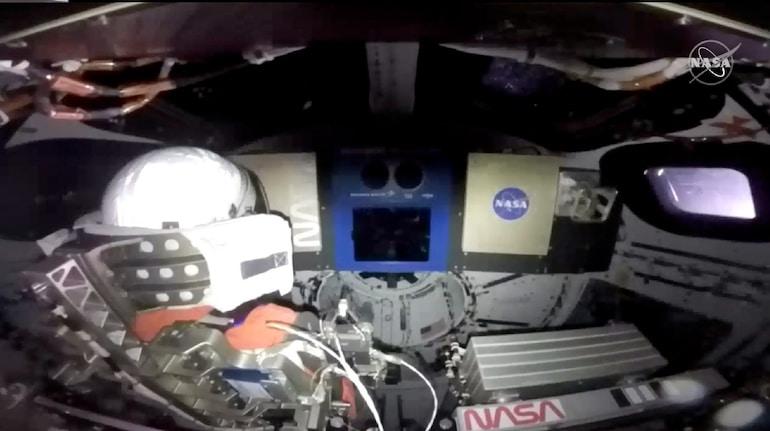NASA checked off another crucial milestone on its first crew-capable moon mission for 50 years early on Monday, with the Orion capsule of Artemis 1 “buzzing” the moon as it made its closest approach to the lunar surface of the 25-day space flight. It’s the first time a capsule has visited the moon since NASA’s Apollo program 50 years ago and represents a huge milestone in the $4.1 billion test flight that began last Wednesday.
The close approach of 130 kilometers (81 miles) occurred on Monday as the crew capsule and its three wired-up dummies were on the far side of the moon. Because of a half-hour communication blackout, flight controllers in Houston, Texas, did not know if the critical engine firing went well until the capsule emerged from behind the moon, 370,000 kilometers (230,000 miles) from Earth. The capsule’s cameras sent back a picture of the Earth—a tiny blue orb surrounded by blackness.
“Our pale blue dot and its eight billion human inhabitants now come into view,” said Mission Control commentator Sandra Jones.
The capsule accelerated well beyond 8,000 km/h (5,000 mph) as it regained radio contact, NASA said. Less than an hour later, Orion soared above Tranquility Base, where US astronauts Neil Armstrong and Buzz Aldrin landed on July 20, 1969, becoming the first men on the moon.
The capsule will spend close to a week in lunar orbit before heading home. A Pacific splashdown is planned for December 11. Orion has no lunar lander; a touchdown won’t come until NASA astronauts attempt a lunar landing in 2025 with SpaceX’s Starship. Before then, astronauts will strap into Orion for a ride around the moon as early as 2024. NASA managers said they were delighted with the progress of the mission. They told reporters late last week that the Space Launch System rocket performed exceptionally well in its debut.

